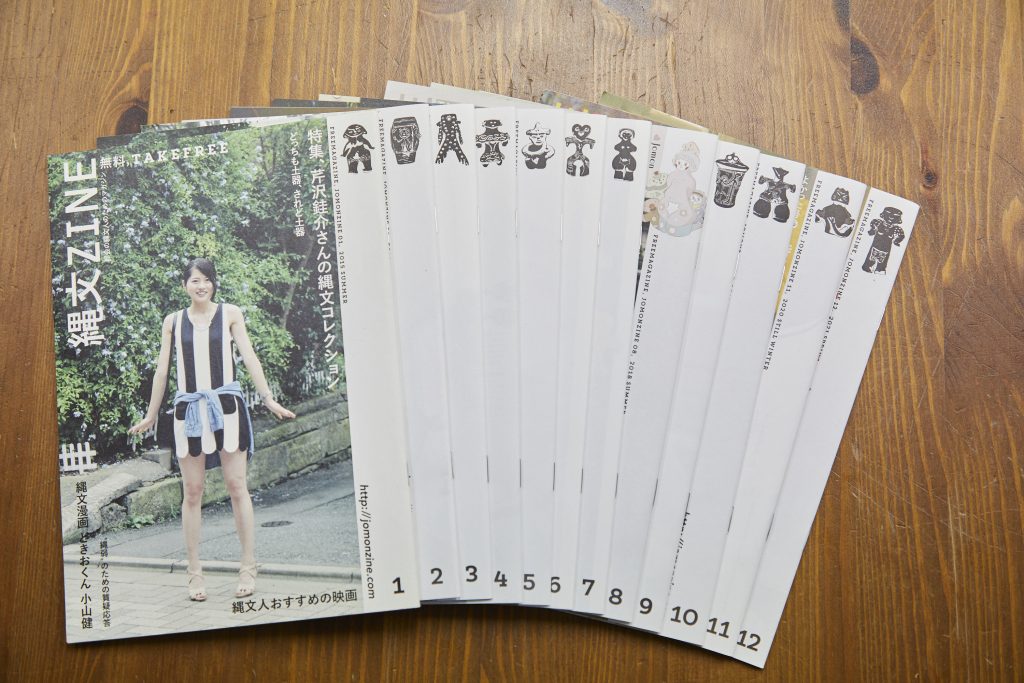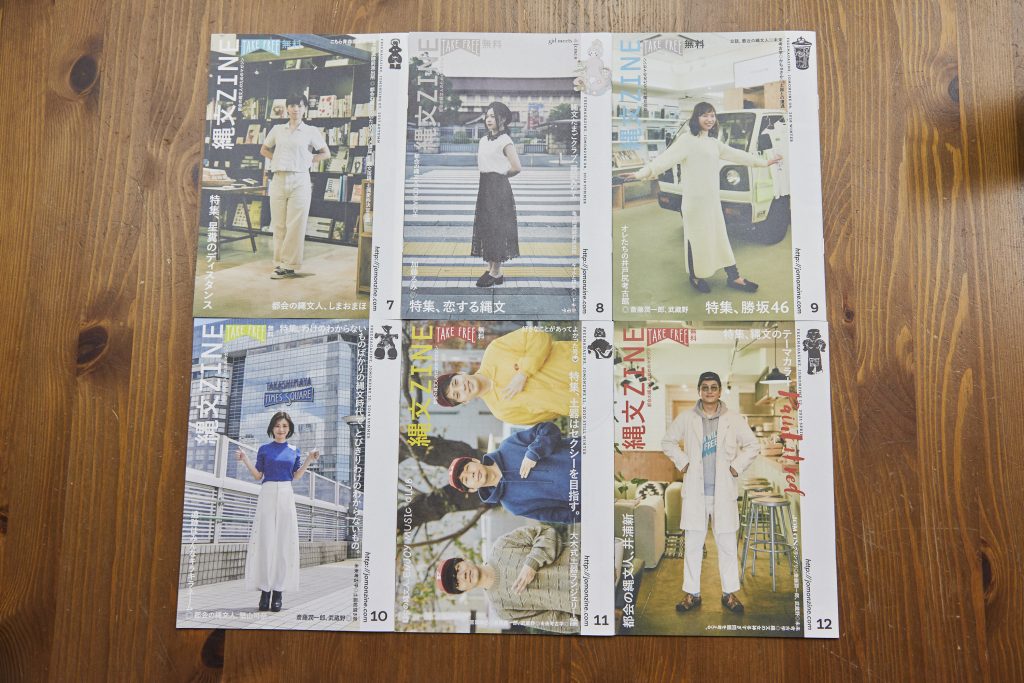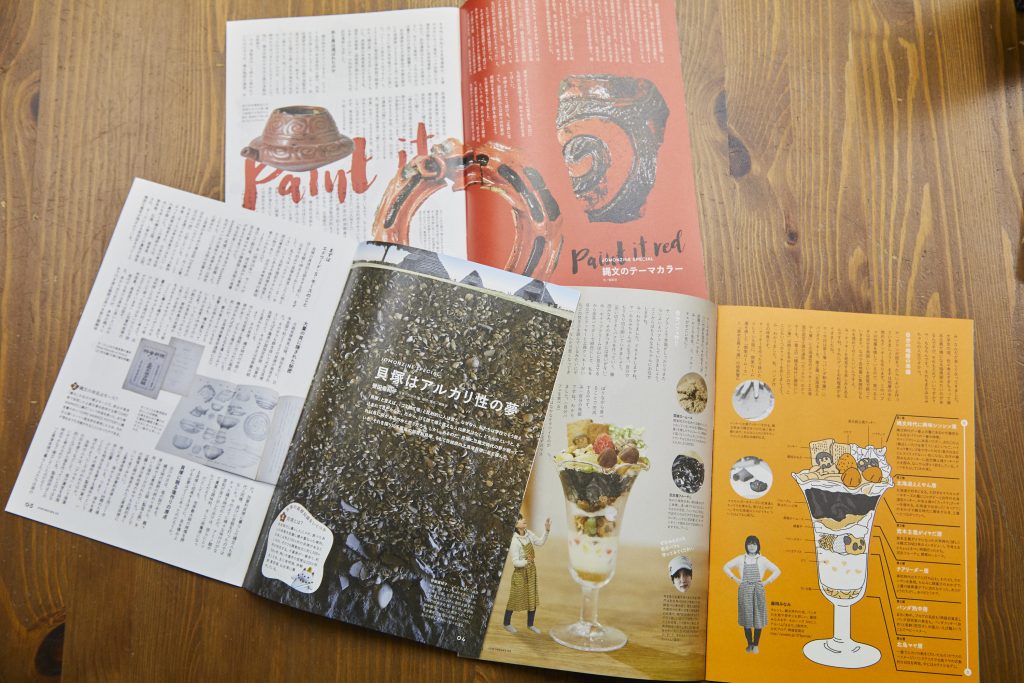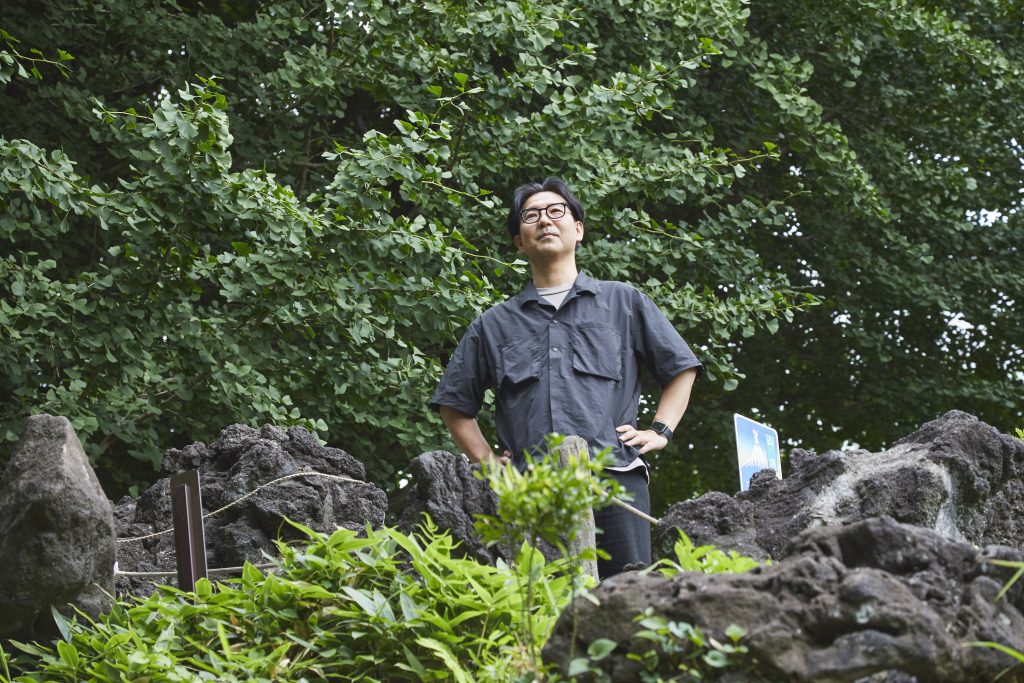—The first issue came out in 2015. What was your motivation for starting Jomon-Zine?
PASSION: Jomon-Zine
The World of Free Newspapers
No.002
The theme of the second installment of our series exploring the world of free newspapers is PASSION. Here we introduce a free newspaper by a man who delves into his interest with passion and gets across the fun of it. It’s called Jomon-Zine, and it conveys interesting aspects of the Jomon period (ca. 14,000 BC – 10th century BC) to modern people who are used to urban culture. We spoke with Akihide Mochizuki, who runs a design office while also serving as editor-in-chief of Jomon-Zine.

“The Jomon period is fun!” spawns a free newspaper
About 10 years ago, I got hooked on Jomon and was visiting exhibitions and symposiums related to the Jomon period. However, wherever I went, there were no young people to be seen, and I found myself worried about the aging of Jomon fans. I wanted to make sense of this fascination and share it! So I decided to start a free newspaper.
—Why did you choose the medium of a free newspaper?
The Jomon period was a time when there was no money, and life was based on bartering and gift-giving. I thought making it a “good” without putting a price on it would be more appropriate for Jomon things.

What Jomon reveals to us
—Can you recommend places in Tokyo where I can see Jomon things?
Omori Shell Mounds, located in Shinagawa and Ota Cities, is the birthplace of archeology in Japan. However, there is often nothing to see at the ruins, so I recommend going there for the vibe more than for seeing things. The Kokugakuin University Museum in Shibuya is full of valuable materials. The Tokyo Metropolitan Archaeological Center in Tama is built on a site of excavated ruins and has unique exhibits. And the Edo-Tokyo Museum holds an “Exhibition of Excavations in the Japanese Archipelago” exhibition every year.
—Once more, what is the appeal of Jomon to you?
There is so much about the Jomon period that has yet to be understood, so I’m sure I will continue to be fascinated by it. The Jomon period was also a time of little movement that saw the development of unique regional cultures, so it’s fun to go to see those differences. Finally, we have lots of cultures that have warriors and nobility and such, but the Jomon period was a time of a classless society and a culture that was of the common people. The closeness I feel to it in that sense is one of its greatest charms.

■Jomon-Zine
Published by NILSON Design Studio
・First published: August 2015
・Published once or twice a year (irregular)
・Number of pages: 30
・Format: 210×148mm
・Circulation: 40,000 copies
・URL:http://jomonzine.com/index.html
ONLY FREE PAPER TOKYO
A “store” that stocks hundreds of complimentary periodicals from all over the country, including freely distributed zines, little press, and indie magazines.
Address: Space Utility TOKYO, 3-5-3 Nakameguro, Meguro, Tokyo
Tel: 03-3792-2121
Open: 1 p.m. – 8 p.m. / Closed on Sunday, Monday, Tuesday (Open on Sunday for events)
http://onlyfreepaper.com/
Supervised by: Kensuke Matsue (ONLY FREE PAPER)
Japanese original text: Emi Sato
Photo: Aya Hatakenaka







